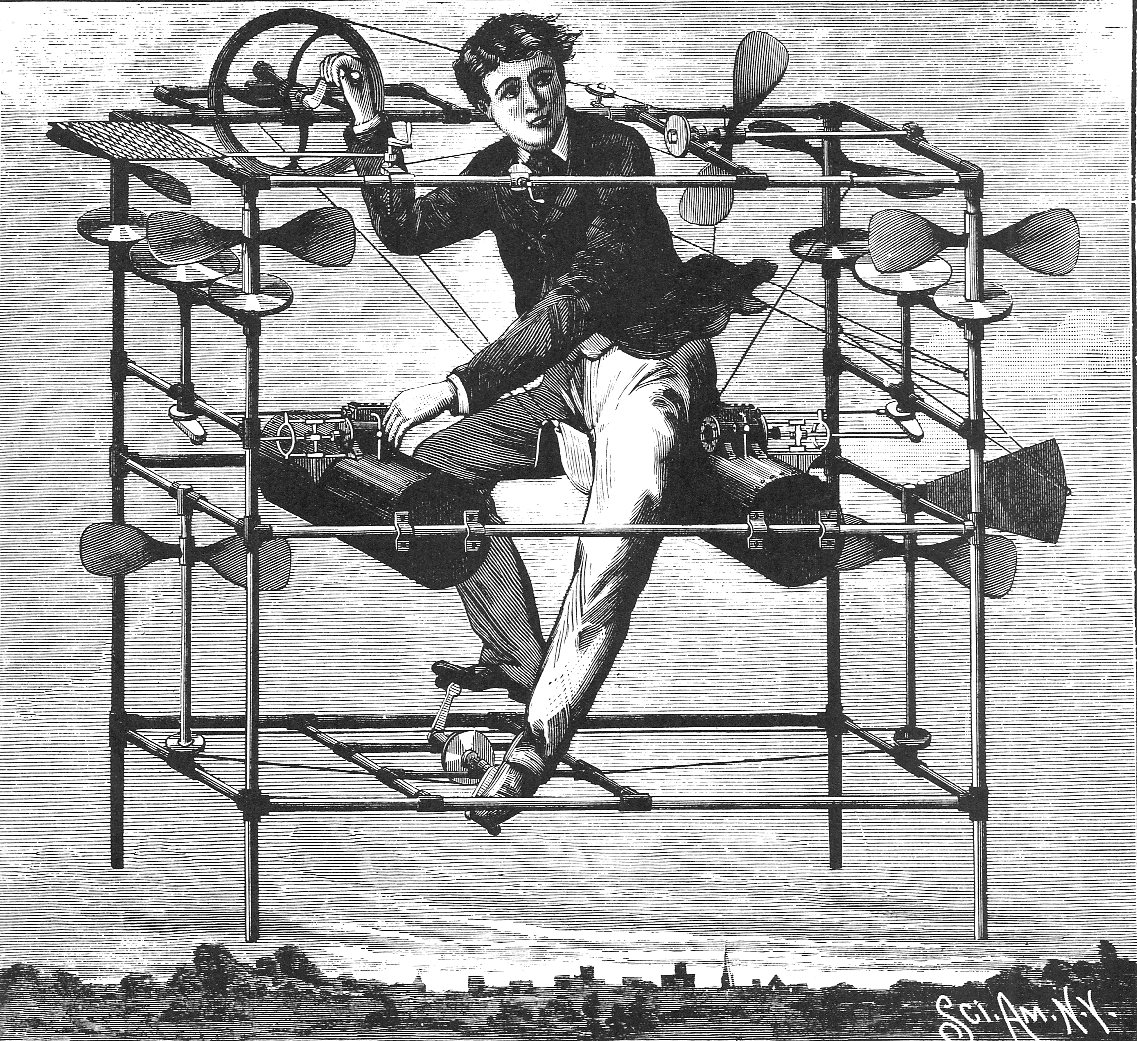
Once the purview of science fiction—and indeed outright fantasy (cf. “Ballooning Craze” of the 18th century [Holmes 2009])—the theory, principles, properties, and morality behind self-contained human-powered flight through the air have been discovered under the auspices of the Institute for Gravitronomic Inertiametrics.
Dr. Annabelle Clumber, currently a journeyman inertiametricist in her third of a five-year residency at the Institute, described an “Isaac Newton moment” that occurred on her eighth week of the residency:
I was deep in the throes of self-doubt at my appointment to the Institute’s Department of Kinematic Rheology [since absorbed into the Field Lab for Military-Industrial Application –ed.] because after my first month I thought I had a good hypothesis to explain why Bernoulli’s principle couldn’t account for the Clausius-Duhem inequality, but it turned out to be because of the Coleman-Noll procedure. Simple.
So I was staring down the barrel of 4.85 more years of twiddling my thumbs in this residency and, mind you, the Department of Regional Anatomy was already hip-deep on their paper on Digit Manipulation, so even that was a non-starter. Full of uncertainty about my future with the Institute, I sat down heavily in my office chair, knocking into the wall, and dislodging Dr. Magda Hesketh-Dorleac’s marvelous volume Standard Atmospheres: Composition, Densities, and Vertical Structures from the shelf. It fell on my head, which hurt like the dickens—it’s an 800-page book—but, like Isaac Newton discovering the apple, I had a tremendous breakthrough.
Dr. Clumber describes the book falling open to the conclusive chapter of Dr. Hesketh-Dorleac’s masterwork, in which she concludes that on an atomic level, all molecules are the same strength; the difference between solids, liquids, and gases is merely the space between the molecules (Hesketh-Dorleac 1932). Dr. Hesketh-Dorleac’s example of wind, which is a dense pack of air molecules bunching up other air molecules in front of it, gave Dr. Clumber the inspiration for the hypothesis of human-powered flight as we now know it:
Given a high enough velocity, one could take advantage of the subsequently denser air to attain lift.
In other words, air becomes almost solid when pushed together by a briskly moving person, which thus provides the necessary rostrum on which one is freed of the bonds of Gravity™.
But how to prove this?

History is littered with humorous and occasionally tragic follies played out by intrepid would-be pilots. The dream of humankind has always been to be where humankind is not: above the ground, in outer space, amid the depths of the ocean, etc. The primary drawback of any attempt at a person transporting oneself through the air, Dr. Clumber points out, is the very intransitivity of the experience: one does not transport, one is transported. A flying machine is always necessary.
Even Wilbur and Orville Wright (whom Dr. Hesketh-Dorleac nearly persuaded to head up the Institute’s then-newly founded east coast operations following their success in Kitty Hawk) did away with the idea of a single person flying under her or his own power by acquiescing to the constraints of the imagination. Id est: There was no way to overcome the mental hurdle of flying.
Yet.
Enlisting the help of Dr. H. H. Von Voltimand, the Institute’s head of psychometry, Dr. Clumber and a cadre of the Institute’s finest scienticians and aeronauticists are making strong headway in the field. Specifically, they’re in a field, attempting to fly in a strong headwind. We’ve very nearly reached the theoretical thickness, in layperson’s terms, of air necessary to fly intransitively.
We will of course be updating our repository of discoveries as the data are analyzed.
